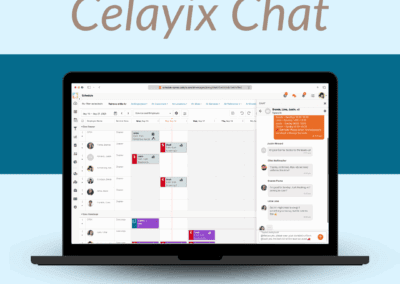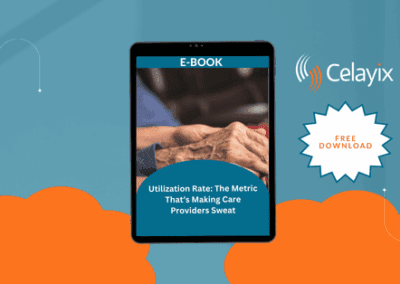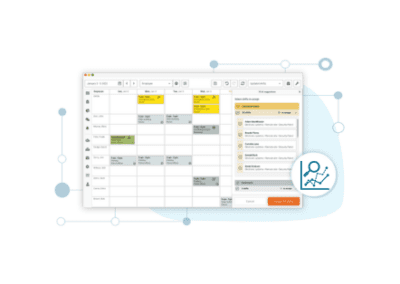Employers lose $400 billion per year to time theft.
Over the past decade, biometric time clocks have revolutionized the check-in process. Thanks to the advances in technology, business owners can now trust that their employees’ check-in and check-out times are unique to them, greatly reducing the likelihood of time fraud.
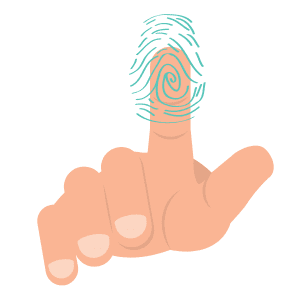
While the traditional method once brought an element of convenience, it can no longer keep up. Biometric time clocks provide a new dimension of reliability. And that is why they are so popular in many industries relying on shift work.
What is a Biometric Time Clock?
A biometric time clock is a time and attendance tool used to track employees’ working hours by monitoring their shift check-in and check-outs. These time clocks have helped to enhance business performance and general operation.
Instead of the more traditional punch-card methods, biometric time clocks help to identify a person through their physiological or behavioral characteristics. These will determine the employees’ uniqueness as recognition when checking-in. Biometric time clocks identify employees.
- Fingerprint
- Face shape
- Hand shape
- Irises
- Voice
The most common of these is a biometric fingerprint reader. Typically, companies place biometric time clocks at the entrance of a site to provide easy access. Once employees clock in, the software system processes and records the biometric data. In order for this data to be fully validated, business owners should choose the best option to suit their needs.
Let’s discuss the different software that can be used to store biometric time clock data.
Which software should you use?
The inbuilt cloud software provided by many biometric time clocks may be enough for smaller businesses. But for those who have a lot of shifts to record, it may not be the optimal choice.
Integrating biometric time clock data with employee scheduling software, and/or time and attendance software has helped to streamline operations for many businesses. Creating a best-fit
schedule can be complicated enough. But having employee scheduling software will give you a greater understanding of how the time clock’s recorded data is impacting your business.
Having a time clock that uses biometric data like a fingerprint, time worked is sent directly to your integrated time and attendance software. That data can then be used for attendance matching – ensuring you only pay employees for the time they actually worked! That data can then be sent to your payroll and billing software to automate the process from start to finish.
Benefits of Biometric Time Clocks
ELIMINATES TIME THEFT
“Buddy punching” has long been known as a dark area of time and attendance. Buddy punching occurs when one employee asks another to punch-in for them. To add to the threat, falsified timecards are another very common way of employees ‘stealing’ the time they haven’t actually worked.
Even more modern time clocks with employee pins/passwords are susceptible to these weaknesses. This can make all the difference to a business’ payroll over a longer period of time.
The unfortunate reality is that time clocks requiring punch-in cards and employee IDs will always remain susceptible to untrustworthy behavior.
A biometric time clock will eliminate any time theft. The verification process that requires an exact form of biometrics means that it’s impossible for another employee to do their colleague a favor.
INCREASING EMPLOYEE ACCOUNTABILITY

A biometric time clock will help you to catch sight of any time-tracking trends. Persistent lateness or not showing up for shifts will be frowned upon by all businesses. With a biometric time clock, you’ll have evidence to make informed decisions.
In the long run, it will help to create a more honest workforce. You may even choose an incentive or reward scheme to boost your team.
BETTER TIME-KEEPING ACCURACY
The dream for any business owner. With the guarantee of real-time accuracy, all employee check-ins will be recorded efficiently. This means you’ll be paying for exactly the labor your employees have worked. Rather than the unreliability of timesheets and text messages, your biometric time clock will ensure that none of that is necessary.
To make the process even easier, you can integrate all of your data into the form of payroll software. Your employees will be grateful that their overtime is being accurately calculated. And your HR department will be able to avoid any embarrassing miscalculations.
Phew.
INCREASED PRODUCTIVITY

Employees will embrace the implementation of a biometric time clock with open arms. The less effort they must make proving the hours they’ve worked, the more they’ll be able to focus on the job at hand. The simplifications that a biometric time clock brings can be a huge boost to employee morale.
REDUCE ERRORS & SAVE TIME
A business owner doesn’t have the hours in the day to monitor their employees’ every movement. Manually processing employee check-ins is only going to cost more time than it’s worth. According to research, up to 3.14 hours a week can be lost with inefficient scheduling processes. And that’s far too much for a small business to be giving away.
By using a biometric time clock, you’ll be provided with efficient and reliable data. But also, you can integrate any software necessary to eradicate user error and streamline your processes. This may mean integrating your time clock with payroll or employee scheduling software.
Why a biometric time clock may be right for you
Biometric time clocks offer a range of benefits for any time-tracking process. But is this technology essential to businesses at this current moment?
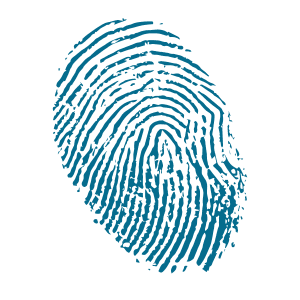
Biometrics time clocks can also be indispensable for businesses looking to integrate with payroll or employee scheduling software. They will process all of your data accurately for you. Meaning any lates, no-shows or overtime will all be accounted for.
Having payroll or employee scheduling software integrated with a biometric time clock will give you an entirely streamlined and optimized business operation. This will alleviate some much-needed time for you HR team.
So yes, we believe that biometric time clocks can be of great value to small to medium businesses looking for a simplified time-tracking solution.


